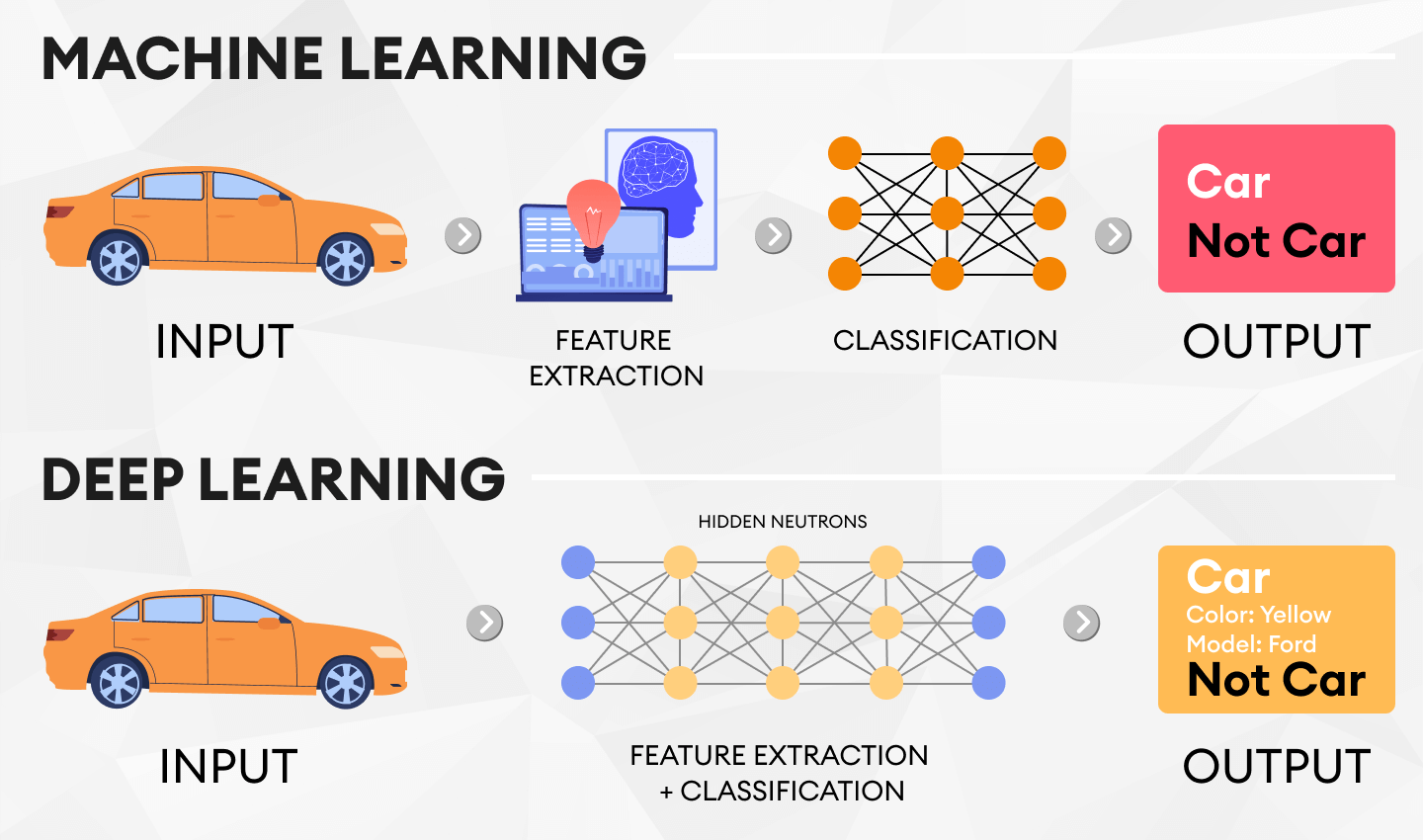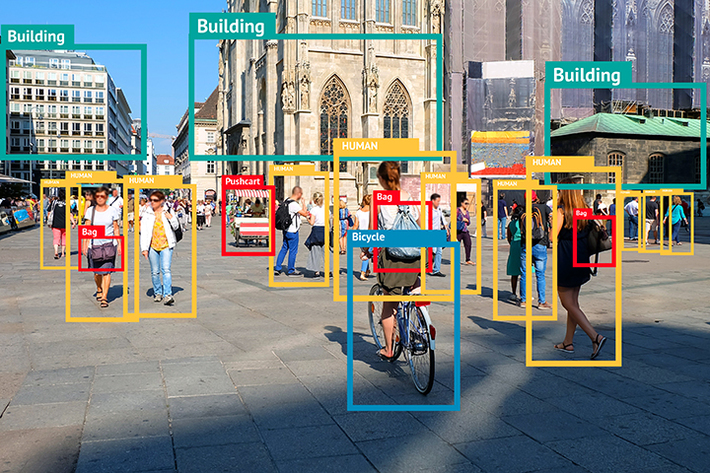In today’s digital era, where visual content dominates our online experiences, image detection has become a crucial aspect of computer vision. Image detection machine learning algorithms enable computers to recognize and understand the content of images. This technology has revolutionized various industries, from healthcare to security, and has opened up new possibilities for automation, analysis, and decision-making.
Understanding Image Detection Machine Learning

Machine learning is a branch of artificial intelligence (AI) that focuses on developing algorithms capable of learning from data and making predictions or decisions without being explicitly programmed. Image detection, a subset of machine learning, specifically deals with training models to identify and classify objects or patterns within images.
The Role of Deep Learning in Image Detection
Deep learning, a subfield of machine learning, has emerged as a game-changer in image detection. It involves training deep neural networks with multiple layers to learn hierarchical representations of data. Deep learning models, such as convolutional neural networks (CNNs), have significantly improved the accuracy and efficiency of image detection tasks.
Popular Image Detection Algorithms
Convolutional Neural Networks (CNNs)
CNNs are widely used for image detection due to their ability to capture local patterns and spatial dependencies within an image. They employ convolutional layers to extract meaningful features and pooling layers to reduce spatial dimensions. CNNs have achieved remarkable results in various image recognition challenges.
Region-based Convolutional Neural Networks (R-CNN)
R-CNN is an extension of CNNs that addresses object detection within images. It combines selective search algorithms with CNNs to generate region proposals for objects, which are then classified individually. R-CNN has improved the accuracy and efficiency of object detection tasks.
You Only Look Once (YOLO)
YOLO is a real-time object detection algorithm that operates at an impressive speed while maintaining high accuracy. It divides an image into a grid and predicts bounding boxes and class probabilities for each grid cell. YOLO has found applications in real-time video surveillance and autonomous driving systems.
Single Shot MultiBox Detector (SSD)
SSD is another popular real-time object detection algorithm that uses a set of default bounding boxes of different scales and aspect ratios. These default boxes are then refined to accurately locate objects within an image. SSD offers a good balance between accuracy and speed.
Training and Data Preparation for Image Detection
Training an image detection model requires a large annotated dataset, where images are labeled with corresponding object classes and bounding box coordinates. Data preprocessing techniques, such as resizing, normalization, and augmentation, play a vital role in enhancing the performance and generalization of the models.
Transfer Learning: Enhancing Image Detection Models
Transfer learning is a technique that leverages pre-trained models on large-scale datasets to improve the performance of image detection models on specific tasks. By transferring knowledge from a source domain to a target domain, transfer learning reduces the need for extensive training data and accelerates the model development process.
Challenges and Limitations of AI Image Detection

While AI image detection has made significant advancements, it still faces several challenges. These include handling occlusions, variations in scale and viewpoint, object ambiguity, and limited training data. Addressing these challenges requires continuous research and innovation in the field of computer vision.
Applications of Image Recognition in Various Industries
Image detection has found widespread applications across diverse industries. Let’s explore some of the notable use cases:
Healthcare
In healthcare, image detection plays a crucial role in medical imaging analysis, assisting in the diagnosis of diseases and abnormalities. It enables radiologists to detect tumors, identify anatomical structures, and track the progression of conditions.
Retail
The retail industry utilizes image detection for object recognition, inventory management, and customer behavior analysis. It enables automated checkout systems, shelf monitoring, and personalized shopping experiences based on visual preferences.
Automotive
In the automotive sector, image detection is essential for autonomous driving, driver assistance systems, and vehicle safety. It helps identify pedestrians, traffic signs, lane boundaries, and other objects critical for making driving decisions.
Security and Surveillance
Image detection enhances security and surveillance systems by detecting suspicious activities, recognizing faces, and identifying objects of interest. It aids in monitoring public spaces, airports, and critical infrastructure, contributing to public safety.
Agriculture
In agriculture, image detection assists in crop monitoring, disease detection, and yield estimation. It enables farmers to make informed decisions about irrigation, fertilization, and pest control, leading to improved crop management and productivity.
A Case Study: Revolutionizing Retail with Image Detection
In the competitive landscape of modern retail, companies are competing to implement advanced technology to improve their performance. With the different challenges that the companies are facing, any new technology that could ease the process of managing the business is key. One global retail company decided to leverage image detection machine learning technology. To be able to handle several issues in the company to achieve better results.
The Challenge: Enhancing Efficiency and Customer Experience
- Manual Inventory Management: the traditional methods of stock monitoring weren’t efficient. It faced many human errors, in addition to being time-consuming.
- Theft and Loss Prevention: the theft inside the store led to many financial losses across the year.
- Personalized Shopping Experiences: understanding the customer’s preferences and their shopping behaviors was challenging. As it needed more advance technologies than the traditional methods.
To address all these challenges the company decided to apply computer vision and deep learning algorithms. To get real-time solutions, and make better decisions.
computer vision and deep learning algorithms
- Smart Inventory Management
The company decided to implement AI-powered cameras in the stores and the warehouses. And trained it on millions of photos to be able to handle many tasks.
- Identifying the misplaced products inside the stores.
- Detecting the out-of-stock teams and sending real-time notifications to the employees to restock them.
- Analyze the shelves organization and suggest new placement to enhance the sales in the stores.
- AI-Powered Theft and Loss Prevention
The theft inside the store was a huge problem that was costing the company millions every year. So the image detection surveillance system leverages deep learning techniques to solve it.
- It identified the suspicious behaviors inside the stores in real-time.
- Detecting the items that were taken without scanning at the check-out.
- Send a notification to security about the potential theft before it happens.
- Hyper-Personalized Customer Experiences
The company applied facial recognition and object detection models. To help the shoppers with a better shopping experience.
- Smart kiosks use facial recognition to suggest a personalized recommendation, based on their purchase history.
- Image detection analyzes the products that customers look at more. Customize offers on them to increase sales.
- Augmented reality technology is used to help customers visualize the clothes and home prices in real life before purchasing them.
The Results: A Data-Driven Retail Revolution
- Reduced labor costs, by depending on the automating stock monitoring. Which reduces the need for manual stock checking.
- Increased efficiency as the AI system worked on reducing human errors and provided real-time insight to improve decision-making.
- Enhanced security with the theft detection system, leading to saving the company revenue.
- Improved customer satisfaction with personalized experience technology. Which increased the customer’s loyalty to the brand.
The Future of Image Detection Machine Learning
The future of image detection and machine learning is promising. Advancements in deep learning architectures, the availability of large annotated datasets, and the integration of image detection with other technologies like augmented reality and natural language processing will drive further innovation. We can expect improved accuracy, real-time performance, and broader application possibilities in the years to come.
Conclusion
Image detection machine learning has revolutionized visual recognition and opened up new horizons across various industries. Through deep learning algorithms and techniques, computers can now understand and analyze images, leading to improved automation, efficiency, and decision-making. As the technology continues to evolve, we can anticipate even more exciting applications and breakthroughs in the field of image detection.
If you’re interested in experiencing the power of image detection and exploring its potential for your business, we invite you to request a demo from AIM Technologies. Our advanced image detection solutions can provide valuable insights and drive innovation in your industry.
FAQs
How does image detection differ from image recognition?
- Image detection involves identifying and locating objects within an image, while image recognition focuses on classifying objects based on their visual characteristics.
Can image detection algorithms work in real-time applications?
- Yes, several image detection algorithms, such as YOLO and SSD, are specifically designed for real-time applications and offer fast processing speeds.
What is the role of annotated datasets in training image detection models?
- Annotated datasets provide labeled images with corresponding object classes and bounding box coordinates, which are essential for training and evaluating image detection models.
Is image detection limited to static images?
- No, image detection algorithms can also be applied to video data, enabling real-time object tracking and analysis.
How can image detection improve security and surveillance systems?
- By detecting and recognizing objects of interest, image detection enhances the capabilities of security and surveillance systems, enabling better threat detection and prevention.




